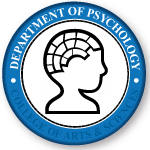Author ORCID Identifier
Reiter-Palmon https://orcid.org/0000-0001-8259-4516
Document Type
Article
Publication Date
8-1-2016
Publication Title
Psychology of Aesthetics, Creativity, and the Arts
Volume
10
Issue
3
First Page
287
Last Page
295
Abstract
Research on creativity has indicated that problem construction, which is the process of making sense out of an ill-defined and ambiguous problem, has a positive influence on solution creativity. This relationship was more closely examined in a sample of university students using multiple everyday problems. Specifically, participants restated the problems in their own words and generated subsequent solutions. In addition, participants’ fluency and problem construction ability were assessed. It was found that how participants constructed problems played an intervening role in the relationship between their overall problem construction ability and the creativity of the solutions they generated above and beyond fluency. This exact relationship, however, depended on the quality and originality of the problem constructions and solutions, as well as the problem. For 1 problem, a congruency effect was found such that problem construction quality predicted solution quality and problem construction originality predicted solution originality. For the other problem, only problem construction quality predicted both solution quality and originality. The results of this study provide evidence showing that problem construction is beneficial to solution creativity in everyday problems but that this relationship might be influenced by task.
Recommended Citation
Arreola, N. & Reiter-Palmon, R. (2016). The effect of problem construction creativity on solution creativity across multiple real-world problems. Psychology of Aesthetics, Creativity, and the Arts, 10(3), 287-295. http://dx.doi.org.leo.lib.unomaha.edu/10.1037/a0040389


Comments
©American Psychological Association, [2016]. This paper is not the copy of record and may not exactly replicate the authoritative document published in the APA journal. The final article is available, upon publication, at: http://dx.doi.org.leo.lib.unomaha.edu/10.1037/a0040389